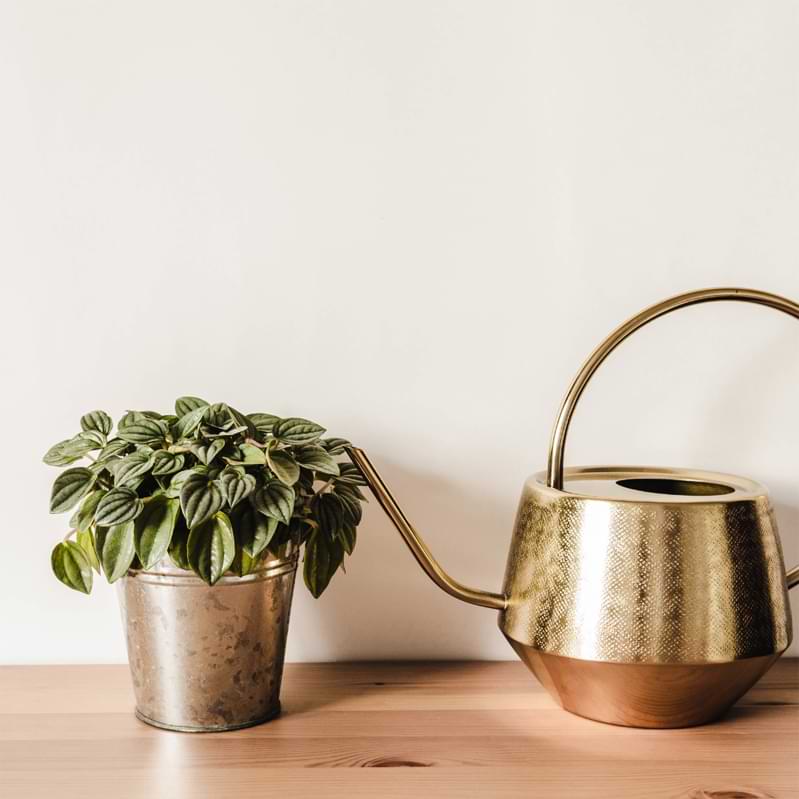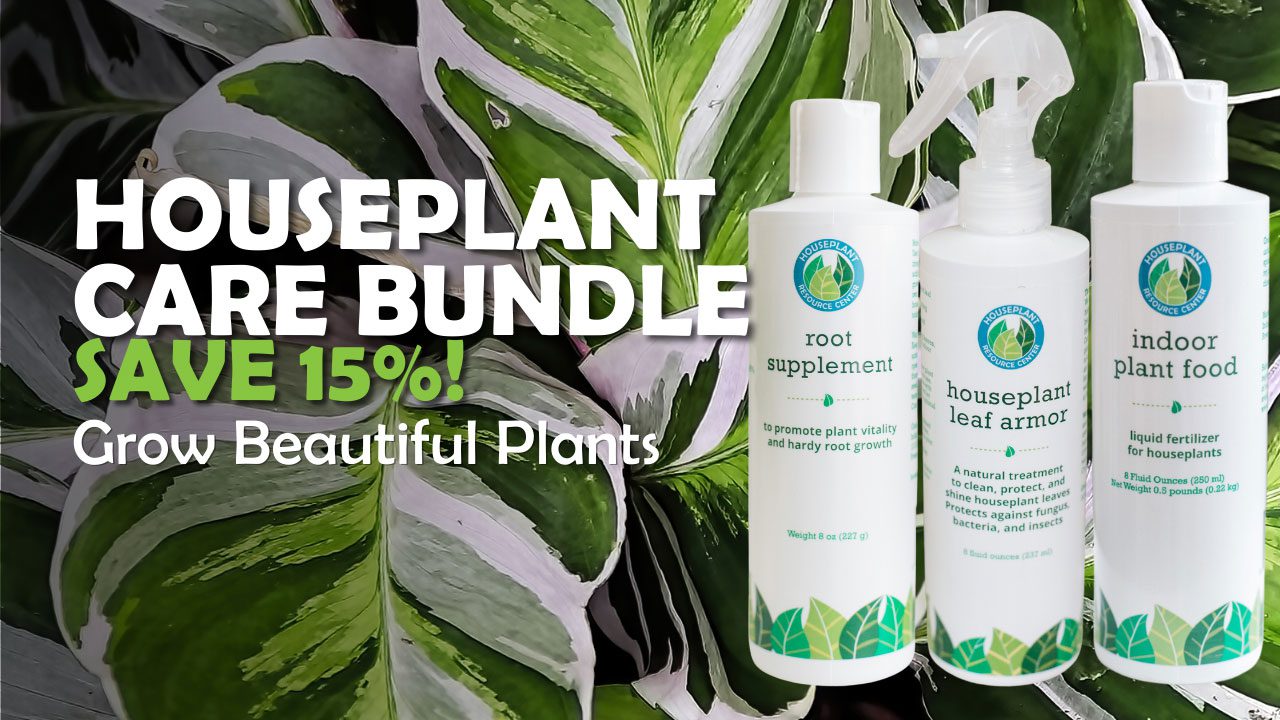Peperomia plants are a delightful, easy to grow houseplant. They have beautiful, variegated leaves and come in many different colors and shapes. Some even have interesting textures! Peperomia are not only gorgeous, but they are also very easy to propagate. They are from the tropical region, including Mexico, South America, and the Caribbean, and they are easy to propagate!
Table of Contents
How To Propagate Peperomia
Peperomia are easy to propagate from either stem or leaf cuttings, and with just a few tools, tips, and some preparation, you can propagate your own plant to fill your home with more plants or to share with friends and family.
Peperomia propagation is best done in the spring or summer when the plant is actively growing, but you can propagate at any time as long as our plant isn’t stressed.
Propagating Tools and Equipment
To propagate peperomia, you will need a few tools on hand:
- A sharp knife or pruning shears
- Well-draining potting mix
- A small pot or container for your new cutting
- Rooting hormone

Where To Cut Peperomia For Propagating
First, decide if you want to take a stem cutting or a leaf cutting. Either method of propagation will work, although stem cuttings are often more successful than leaf cuttings. Look for a healthy and strong stem or leaf, and then trace it back to a growth node. It looks almost like a knuckle where more stems or leaves will grow from the main stem.
You will cut just under that node at a 45 degree angle. If you are using the stem propagation method, you’ll want to make sure you have at least 3 inches of stem above the cutting. This may be more difficult with smaller plants, so just try to get as much stem as you can. For leaf propagation, just the leaf stem is needed.
Propagating Peperomia From Stem Cuttings
After you’ve taken your stem cutting, remove any leaves from the bottom half of the cutting and dip the cut end into rooting hormone. From here, you have two choices on how to grow the new roots. You can either root your cutting in water or directly in soil.
1) Rooting In Water
Rooting your cutting in water is probably the simplest way to propagate your plant, but success rates vary with this method. To use this method, simply place your cutting in a jar of clean water, ensuring that your water level is below the first leaf stem. You will need to change the water every 2-3 days to ensure no bacteria growth occurs.
A benefit to rooting in water is that you can apply rooting hormone more than once, you can actually mix it into your water the first few times you do a water change. This could help speed up the rooting process. Only do it the first one or two or three times you change the water, though.
Once you have a solid root system started, plant your cutting in your well-draining soil and give it a good watering. From there, water on a regular basis when the top two to three inches of soil dry out.
2) Rooting In Soil
To root your cutting in soil, plant the cutting in a moistened potting mix after dipping the end in rooting hormone, being sure to firm the mix around the base of the cutting. Water well and place in a warm location out of direct sunlight. Keep the soil moist but not soggy and in 6-10 weeks you should see new growth appearing.
If you notice any browning of the stem around the base where it meets the soil, you will need to try again with a different cutting, as it has likely rotted and will not produce a viable plant. To prevent this from happening, you can mix in some cinnamon into the soil before placing your cutting in it. Using a rooting hormone or propagation promoter should help prevent this from happening, though.
Propagating Peperomia From Leaf Cuttings
To propagate from leaf cuttings, cut a healthy leaf off at its base. Opt for a larger leaf that isn’t too old, but also isn’t brand new. Place the leaf in a pot with some moistened potting mix, being sure to firm the mix around the base of the leaf. Water well and place in a warm location out of direct sunlight. Keep the soil moist but not soggy and in 6-10 weeks you should have some roots growing. It will take a bit more time to see growth above the soil with this method.
It is best to take the leaf cuttings in the spring or early summer when the plant is actively growing to give this method the best chance at success. When propagating from a leaf, it’s recommended to root in soil as opposed to rooting in water. There are better success rates with this method, and it will give you the best results, but you can always try both to see what method works best for you.
Caring for Peperomia After Propagating
Once you have successfully propagated your peperomia plant, it is important to care for it properly to ensure that it continues to grow and thrive. Here are some tips for caring for a propagated peperomia plant:
Light And Position
Peperomia plants prefer bright, indirect sunlight. Although it is possible to grow a peperomia plant outside in warmer climates, its ideal growing conditions are going to be inside where the temperature and light stays relatively stable.
This plant needs plenty of bright, indirect sunlight every day, and would do best when they’re placed in an area with good airflow. This helps to prevent the leaves from becoming too wet and promotes healthy growth. A south-facing window would give your plant plenty of indirect light, just be sure to have a fan on during the summer time to ensure it doesn’t get too hot, and to give your plant plenty of air flow.
Temperature & Humidity
The most ideal temperature for propagating peperomia is between 70-85 degrees Fahrenheit. If the temperature is too cold, the leaves will become etiolated and if the temperature is too hot, the leaves will become limp.
The best way to maintain humidity for propagating peperomia is to use a humidity dome or place the pots in a tray of water, also called a humidity tray. The water in the tray should be changed every few days to prevent mold or mildew from forming.
Soil Type
Peperomia plants are not particular about soil type, but they do prefer a well-drained potting mix. A good quality, all-purpose potting mix or African violet potting mix will work fine. You can also make your own potting mix by mixing equal parts peat moss, perlite, and vermiculite.
The only big requirement for peperomia plants as far as soil goes is that it is well-draining. Most indoor potting soil that is available today will be just fine for this plant.

Watering
Water your plant when the soil is dry to the touch. Do not water your peperomia plant if the soil is already wet as this can lead to root rot. Aim to use lukewarm water when watering your plant. Cold water can shock the roots and damage the plant. Cool water should be fine for your plant, just try not to water with frigid cold water.
When watering your plant, be sure to saturate the soil completely so that water runs out of the bottom of the pot. Allow the plant to drain completely before placing it back in its saucer. Once you get to know your plant better, you should be able to determine a set schedule for watering, but at first you’ll want to check it every couple of days to see when the top of the soil has dried.
Fertilizer
Peperomia plants are not heavy feeders, so you don’t need to use a lot of fertilizer. In fact, it’s best to err on the side of using less rather than more. Over-fertilizing can burn the roots of your peperomia plants and damage them significantly.
The best time to fertilize peperomia plants is in the spring, before they start actively growing. You can use a general-purpose fertilizer or a specialty fertilizer made for foliage plants. You can also use an indoor plant food that you give every time you water the plant. Whatever fertilizer you decide to use, always apply the fertilizer according to the manufacturer’s instructions.
If you see signs that your peperomia plants are not getting enough nutrients, such as yellowing leaves or stunted growth, you can fertilize them more frequently. However, be sure to lower the amount of fertilizer you use so that you don’t damage the roots.
Common Problems After Propagating
One of the most common problems after propagating peperomia is that the leaves start to turn brown and wilt. This is usually caused by too much water or not enough light. If your plant is getting too much water, try moving it to a drier location. If it’s not getting enough light, try moving it to a brighter location.
Another common problem is that the leaves start to yellow and fall off. This can be caused by a number of things, including over-watering, under-watering, or insufficient light. If you think your plant might be over-watered, try letting the soil dry out more between watering. If you think it might be under-watered, try increasing the frequency of watering. If you think it might not be getting enough light, try moving it to a brighter location.
If you see any pests on your plant, such as aphids or mealybugs, try to remove them with a cotton swab dipped in rubbing alcohol. If the infestation is severe, you may need to use an insecticide or neem oil.
Unfortunately, sometimes stem cuttings and leaf cuttings just don’t root. It could be caused by any number of factors, but it’s usually due to the health of the parent plant. In this case, you could always try again with another cutting.
FAQ How To Propagate Peperomia
Can you speed up peperomia propagation?
Peperomia plants will usually propagate at their own pace, but ensuring you care for the cutting properly will help it root faster. Using rooting hormone is the first step to getting your cutting to propagate quickly, and from there, just make sure to water your cutting properly and stay on top of any pest problems. Some people have seen roots emerge in just a couple weeks, but give your cutting at least 6 weeks to show some root growth.
How long does peperomia take to propagate in water?
Peperomia plants are fairly easy to propagate in water. It generally takes about 2-6 weeks for roots to form. Be sure to change out the water every few days and keep the water level low enough so that the leaves are not sitting in water.
Houseplant Resources
Looking for more houseplant info? We highly recommend our super informative (and FREE!) Houseplants for Beginners Webinar. Check out our community of other plant lovers in our Facebook group. And if you’re looking for handy go-to reference for all your houseplant needs, check out our The Last Houseplant Book You Will Ever Need.




